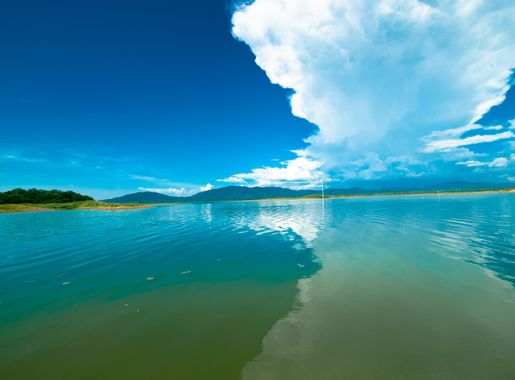
The Enchanting Huaraz Region
Explore the Huaraz Region in Peru: A haven for adventure enthusiasts and nature lovers, offering stunning Andean landscapes, cultural festivals, and historic sites.
Nestled in the heart of the Peruvian Andes, the Huaraz Region is a paradise for nature lovers and adventure seekers alike. Known for its breathtaking mountain scenery, this region is home to the Cordillera Blanca, the highest tropical mountain range in the world. Here, you will find Huascarán, Peru’s tallest peak, standing majestically at 6,768 meters above sea level. The area offers numerous trekking opportunities, including the famous Santa Cruz trek, which takes you through picturesque valleys, glacial lakes, and quaint Andean villages. Huaraz, the bustling capital of the region, serves as the gateway to these natural wonders. The city itself is vibrant and lively, with a rich history and a welcoming local culture. Visit the local markets to experience the flavors of traditional Peruvian cuisine or explore the ancient ruins of Wilcahuain, which date back to pre-Incan times. The region is also renowned for its hot springs, perfect for unwinding after a day of hiking or climbing. For those interested in cultural experiences, Huaraz offers numerous festivals throughout the year, showcasing traditional music, dance, and crafts. The region’s indigenous heritage is deeply rooted, and visitors can learn about the customs and traditions that have been preserved for centuries. Whether you’re looking to scale towering peaks, immerse yourself in local culture, or simply enjoy the stunning landscapes, the Huaraz Region has something for everyone.
Local tips in Huaraz Region
- Acclimatize for at least a day or two in Huaraz before attempting high-altitude treks to avoid altitude sickness.
- Visit the local markets early in the morning for the freshest produce and a more authentic experience.
- Pack layers of clothing; the weather can change rapidly in the mountains, with warm days and cold nights.
- Hire a local guide for treks; their knowledge of the terrain and local culture can greatly enhance your experience.
- Bring cash; many small villages and local establishments do not accept credit cards.
- Don't miss the traditional festivals; they offer a unique glimpse into the local culture and traditions.
The Enchanting Huaraz Region
Nestled in the heart of the Peruvian Andes, the Huaraz Region is a paradise for nature lovers and adventure seekers alike. Known for its breathtaking mountain scenery, this region is home to the Cordillera Blanca, the highest tropical mountain range in the world. Here, you will find Huascarán, Peru’s tallest peak, standing majestically at 6,768 meters above sea level. The area offers numerous trekking opportunities, including the famous Santa Cruz trek, which takes you through picturesque valleys, glacial lakes, and quaint Andean villages. Huaraz, the bustling capital of the region, serves as the gateway to these natural wonders. The city itself is vibrant and lively, with a rich history and a welcoming local culture. Visit the local markets to experience the flavors of traditional Peruvian cuisine or explore the ancient ruins of Wilcahuain, which date back to pre-Incan times. The region is also renowned for its hot springs, perfect for unwinding after a day of hiking or climbing. For those interested in cultural experiences, Huaraz offers numerous festivals throughout the year, showcasing traditional music, dance, and crafts. The region’s indigenous heritage is deeply rooted, and visitors can learn about the customs and traditions that have been preserved for centuries. Whether you’re looking to scale towering peaks, immerse yourself in local culture, or simply enjoy the stunning landscapes, the Huaraz Region has something for everyone.
When is the best time to go to Huaraz Region?
Iconic landmarks you can’t miss
Main Square of Huaraz
Discover the vibrant atmosphere of Huaraz's Main Square, a blend of nature, culture, and stunning Andean views, perfect for relaxation and exploration.

Mirador de Rataquenua
Discover the stunning Andean views at Mirador de Rataquenua, a must-visit viewpoint in Huaraz, Peru, perfect for photography and tranquility.
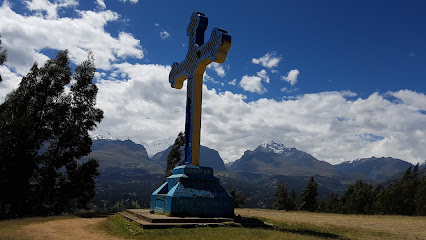
Templo de Wilcahuain
Explore the breathtaking Templo de Wilcahuain, an archaeological gem in Peru, offering rich history and stunning Andean landscapes.
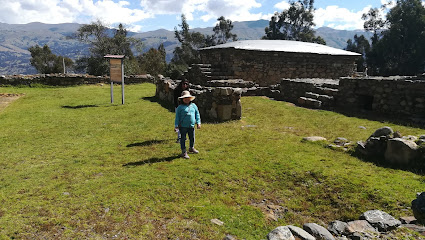
Monumento a la Madre
Discover the Monumento a la Madre in Huaraz, a moving tribute to mothers, blending history, culture, and serene natural beauty for an unforgettable experience.
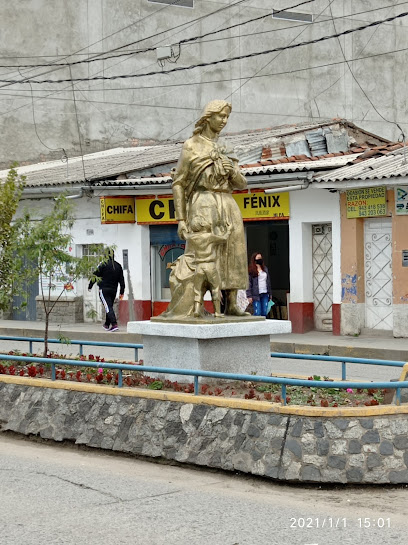
Unmissable attractions to see
Iglesia Del Señor De La Soledad
Discover the captivating beauty and spiritual significance of Iglesia Del Señor De La Soledad in Huaraz, a true gem of Peruvian heritage.
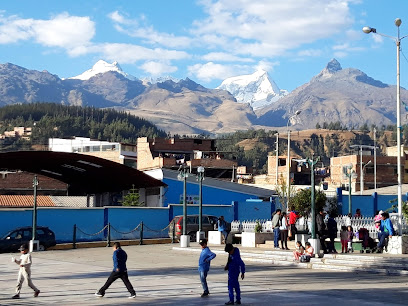
Plazuela de la Soledad
Discover the serene charm of Plazuela de la Soledad in Huaraz, where nature meets spirituality in a tranquil park setting.

Mirador de Rataquenua
Explore the stunning landscapes of Huaraz at Mirador de Rataquenua, a breathtaking viewpoint offering panoramic views of the Andes.
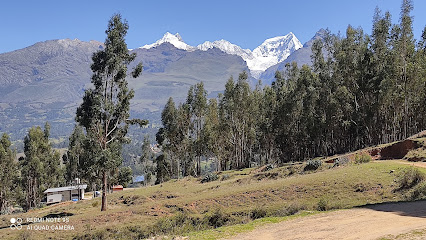
leones Park
Discover the lush landscapes and serene ambiance of Leones Park in Huaraz, a perfect retreat for nature lovers and adventure seekers alike.

Plazuela de Belén
Experience the serene beauty and local charm of Plazuela de Belén, a tranquil park in Huaraz, perfect for relaxation and cultural immersion.

Laguna de Wilcacocha
Experience the captivating beauty and tranquility of Laguna de Wilcacocha, an alpine lake nestled in Peru's stunning Cordillera Blanca.

Parque Monolitico
Experience the serene beauty and cultural richness of Parque Monolitico in Huaraz, a perfect blend of nature and history.

Laguna Churup Trailhead
Discover the breathtaking beauty of Laguna Churup Trailhead; a hiker's paradise nestled in the stunning Peruvian Andes with scenic views and vibrant wildlife.
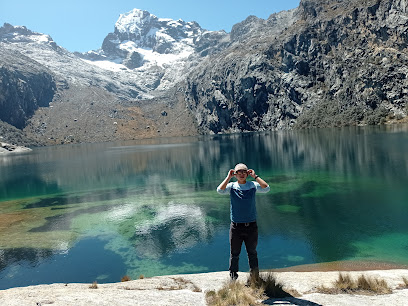
Mirador churup
Discover the stunning beauty of Mirador Churup, a top hiking destination near Huaraz, Peru, renowned for breathtaking landscapes and rich wildlife.
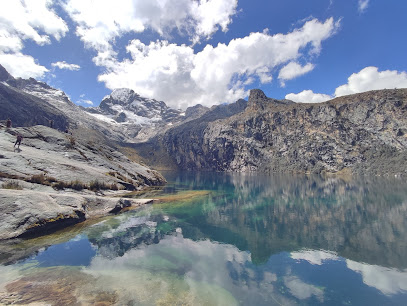
Los Andes
Discover the serene beauty of Los Andes in Huaraz, Peru, where nature meets tranquility amidst breathtaking mountain vistas.

Waullac
Discover Waullac, an archaeological gem near Huaraz, Peru, revealing the ancient civilizations of the Andes amidst breathtaking landscapes.
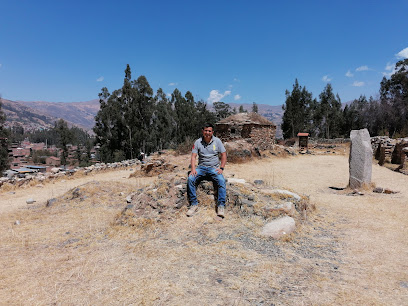
Quechcap
Explore Quechcap in Huaraz, an awe-inspiring tourist attraction offering stunning Andean landscapes and rich cultural experiences.

Centro Poblado de Shansha
Explore the breathtaking landscapes and rich culture of Centro Poblado de Shansha, a hiking paradise near Huaraz, Peru, perfect for nature lovers.

CENTRO POBLADO DE SAN NICOLAS
Explore the breathtaking hiking trails and rich cultural heritage of Centro Poblado de San Nicolas, a hidden gem in the heart of Huaraz.
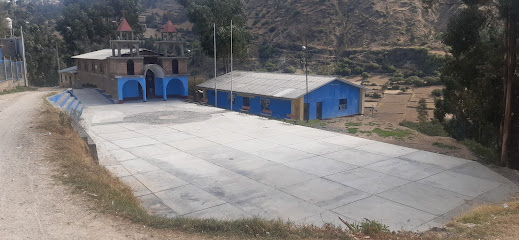
Pacha Andean Walkers
Discover breathtaking views and serene landscapes at Pacha Andean Walkers, the ultimate observation deck in Huaraz, Peru.
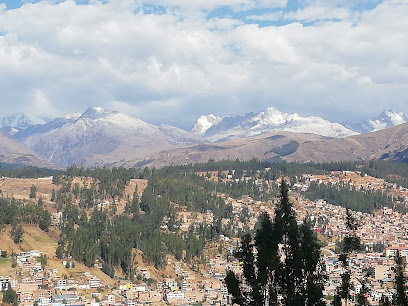
Essential places to dine
Don Cuy
Discover authentic Peruvian flavors at Don Cuy in Huaraz – where every dish tells a story!
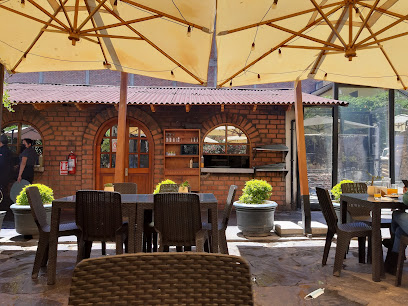
El Fogón
Discover the rich flavors of Peru at El Fogón in Huaraz – where culinary excellence meets local charm.
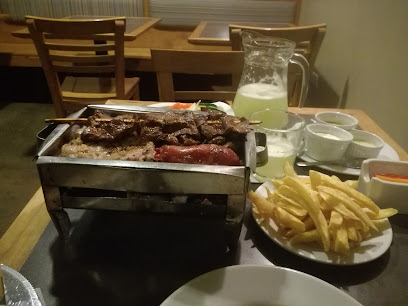
Trivio Resto Bar
Discover the flavors of Peru at Trivio Resto Bar in Huaraz - where local ingredients meet international culinary artistry.
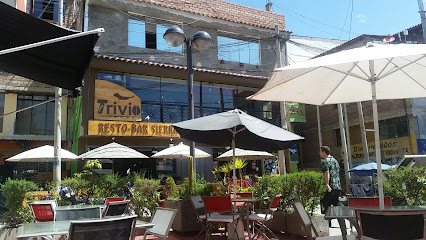
Mi Comedia - Pizzeria
Discover authentic Italian flavors at Mi Comedia - Pizzeria in Huaraz; where every pizza tells a story amidst stunning Andean vistas.
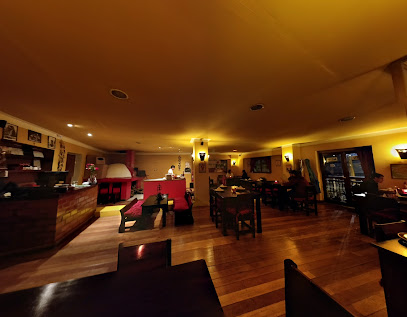
Taita
Experience authentic Peruvian cuisine at Taita in Huaraz - where every dish tells a story.
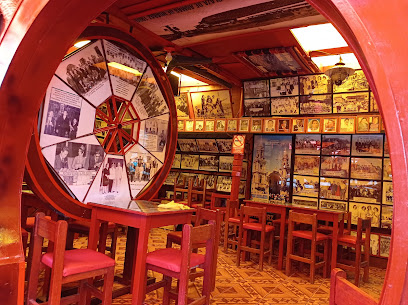
EL RINCONCITO MINERO
Discover authentic Peruvian cuisine at El Rinconcito Minero in Huaraz—where tradition meets flavor in a cozy setting.
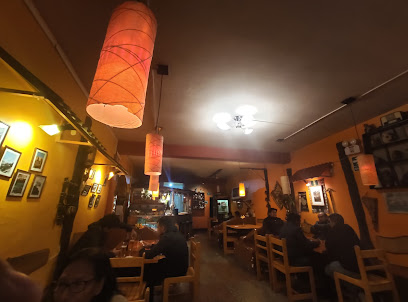
Restaurante Del Sole
Experience authentic Peruvian flavors amidst stunning Andean scenery at Restaurante Del Sole in Huaraz.

EL AJI SECO - HUARAZ
Discover authentic Peruvian cuisine at El Aji Seco in Huaraz – where every dish tells a story.

Wayta - El Chef Andino
Discover authentic Peruvian flavors at Wayta - El Chef Andino in Huaraz, where tradition meets culinary innovation.
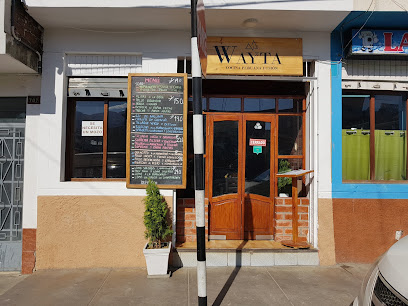
Kaypacha Restaurante
Experience authentic Peruvian flavors at Kaypacha Restaurante in Huaraz – where every dish tells a story.

Jose Olaya
Experience authentic Peruvian cuisine at Jose Olaya in Huaraz—where every dish tells a story.
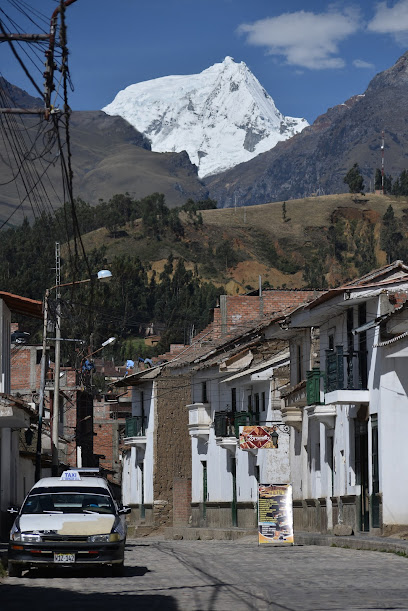
Encuentro Restaurant & Bar
Discover the vibrant tastes of Peru at Encuentro Restaurant & Bar in Huaraz - where every meal is a celebration!
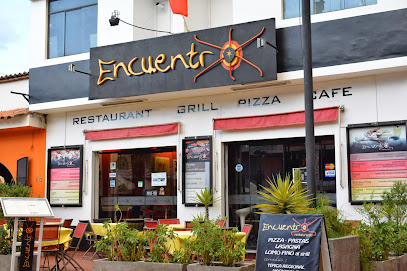
D’Dos Restaurant
Discover the rich flavors of Peru at D’Dos Restaurant in Huaraz – where local ingredients meet culinary creativity.
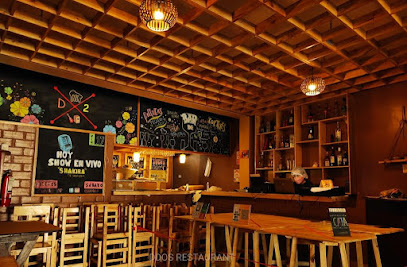
Hierba Buena Restaurante
Experience authentic Peruvian cuisine at Hierba Buena Restaurante in Huaraz - where every dish tells a story.
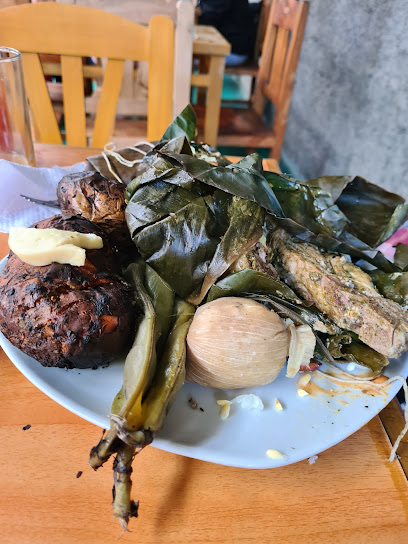
Ala qué rico
Experience the rich flavors of Peruvian cuisine at Ala qué rico, Huaraz's premier destination for grilled delicacies and gastropub delights.
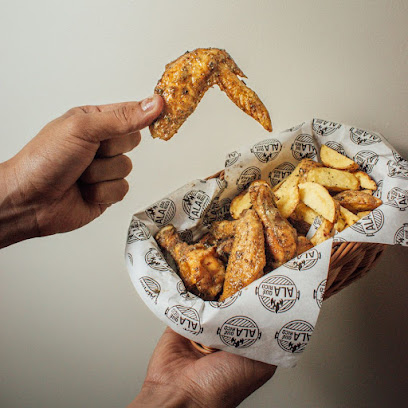
Markets, malls and hidden boutiques
Mercado Central de Huaraz
Experience the heart of Huaraz at Mercado Central, a vibrant market offering local flavors, crafts, and the essence of Peruvian culture.
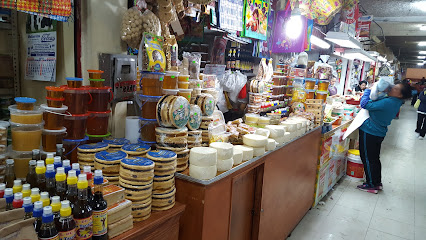
Novaplaza
Discover Novaplaza in Huaraz: Your one-stop supermarket for local flavors and essentials in the heart of Peru.
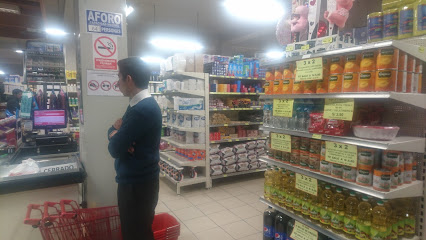
Disley Market
Discover the flavors of Huaraz at Disley Market, a vibrant supermarket filled with local produce, artisanal goods, and authentic Peruvian delicacies.

Don Queso
Discover local flavors and gourmet delights at Don Queso, Huaraz's culinary gem for food enthusiasts and travelers.

Trujillo Market
Experience the vibrant culture and flavors of Huaraz at Trujillo Market, a hub for local produce and artisanal goods.
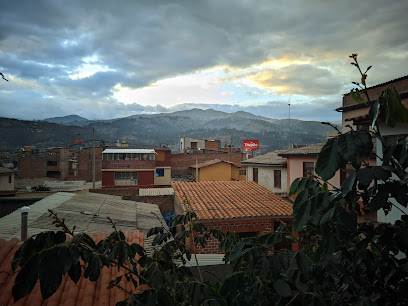
Golden Plaza
Golden Plaza: Huaraz's premier shopping destination with diverse shops, dining, and entertainment to enhance your visit.
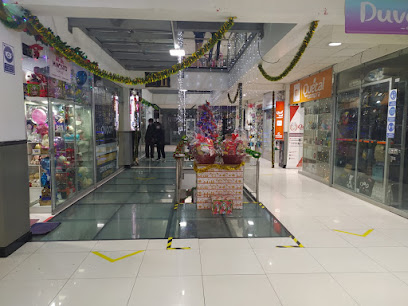
Andes Camping Mountain Shop
Your premier destination for sports equipment rentals and travel planning in the breathtaking Andes Mountains of Huaraz, Peru.
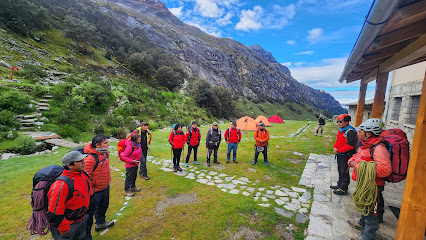
Mercado Popular de Huaraz
Dive into the vibrant culinary scene at Mercado Popular de Huaraz, where fresh flavors and local culture come alive in a bustling market atmosphere.

Muruwa Café | Cafetería de Especialidad
Discover the rich flavors of specialty coffee at Muruwa Café in Huaraz, a must-visit spot for coffee lovers and tourists alike.

Rosa Rosita, Casa de los Quesos y Jamones
Explore Rosa Rosita, Casa de los Quesos y Jamones, a culinary gem in Huaraz offering exquisite local cheeses and hams in a vibrant shopping atmosphere.
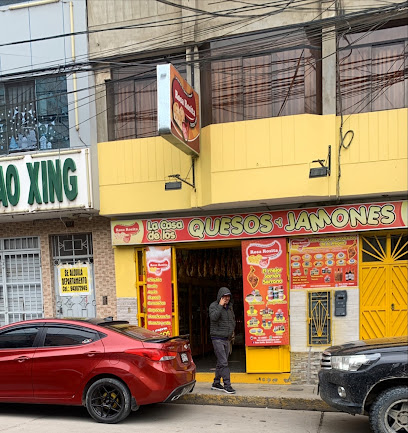
FECOPE EIRL
Explore FECOPE EIRL in Huaraz for a delightful selection of home goods that blend quality, style, and local craftsmanship.

Tiendas El
Discover fashion and local craftsmanship at Tiendas El, a vibrant clothing store in Huaraz offering unique styles and a welcoming shopping atmosphere.
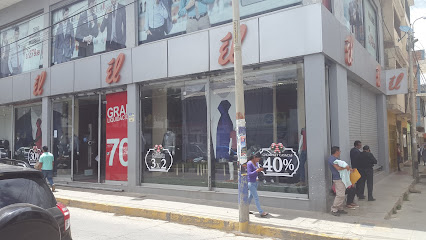
Paniños
Discover Paniños in Huaraz – a vibrant shopping mall blending local culture with diverse shopping and dining options.

Market Plaza Lucy II
Explore the vibrant Market Plaza Lucy II in Huaraz, a shopping haven filled with local culture, unique crafts, and delicious Peruvian cuisine.

BILLAR EL CHENTE
Experience the vibrant culture of Huaraz at Billar El Chente, a premier shopping and entertainment destination in the heart of the city.

Essential bars & hidden hideouts
Trece Buhos
Discover Trece Buhos, a grill restaurant in Huaraz offering a delectable fusion of local flavors and grilled dishes to delight every palate.
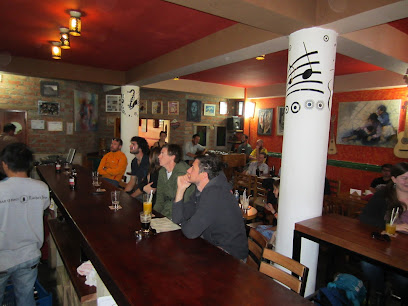
El Tío Enrique
Discover the vibrant nightlife of Huaraz at El Tío Enrique, where local culture meets refreshing drinks and great company.

Laberinto Resto Bar
Experience the vibrant flavors of Huaraz at Laberinto Resto Bar, a grill haven for food lovers seeking unforgettable culinary adventures.

Kuya Kuya Coctelería Profesional Novoandina - Huaraz
Discover Kuya Kuya Coctelería Profesional Novoandina, where traditional Peruvian ingredients meet innovative mixology in a vibrant cocktail bar in Huaraz.
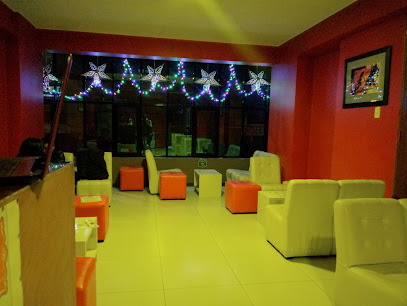
BonusTrack Huaraz Bar (Chavo's)
Discover BonusTrack Huaraz Bar: A lively hotspot where locals and travelers gather for unforgettable nights filled with music, drinks, and camaraderie.
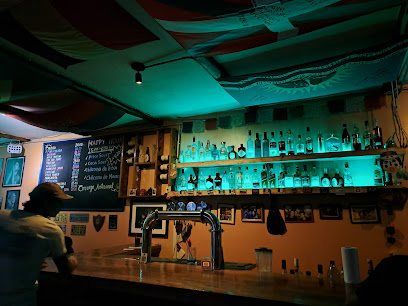
Killa bar
Discover the vibrant nightlife at Killa Bar in Huaraz, where great drinks and live music create an unforgettable experience.
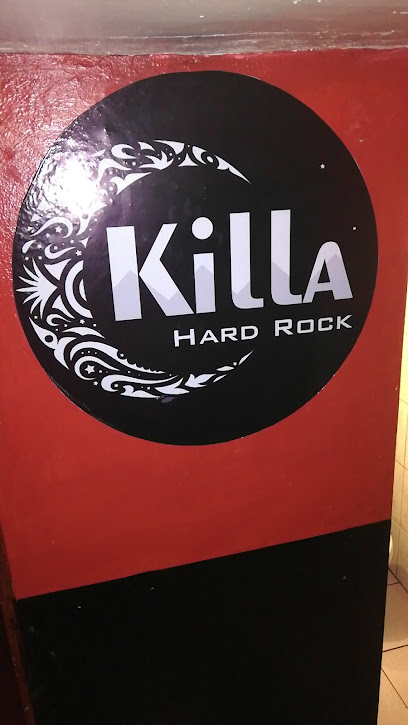
Mantra Club
Experience the vibrant nightlife at Mantra Club in Huaraz, a perfect blend of local culture, refreshing drinks, and lively ambiance.
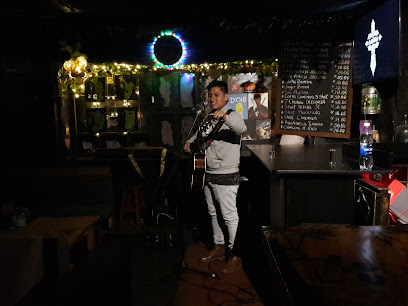
Previous - Lounge Bar
Discover Huaraz's nightlife at Previous - Lounge Bar, where great drinks and a fun atmosphere await every evening.
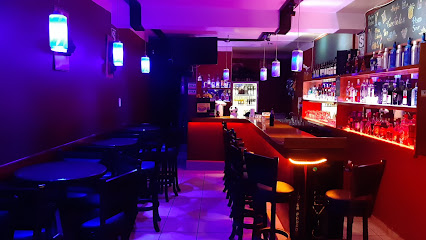
El Alquimista Rooftop Bar
Experience the breathtaking views and vibrant atmosphere at El Alquimista Rooftop Bar in Huaraz, a perfect end to your adventurous day.
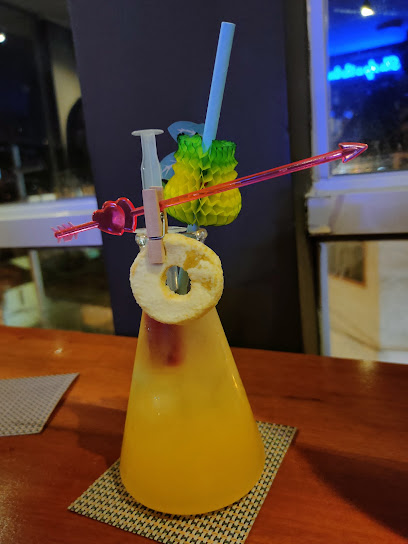
Lavitola
Discover Lavitola, Huaraz's vibrant bar offering an array of local drinks and a lively atmosphere amidst stunning Andean views.

Divina Costumbre Resto Bar
Discover the lively spirit of Huaraz at Divina Costumbre Resto Bar, where local flavors and vibrant atmosphere create unforgettable experiences.
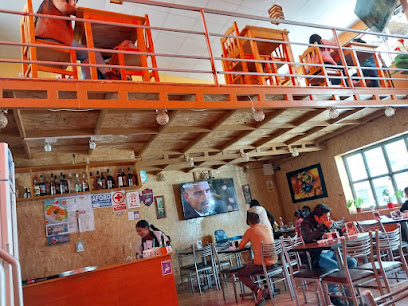
Bohemia Resto Bar Huaraz
Experience the best of local and international flavors at Bohemia Resto Bar, a premier gastropub in the heart of Huaraz.
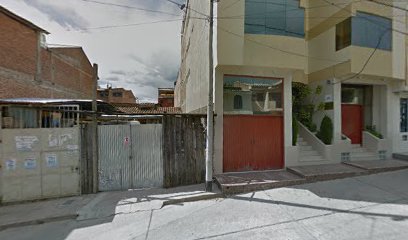
Lliclla Rooftop Bar
Experience the breathtaking views and authentic flavors of Peru at Lliclla Rooftop Bar, the perfect dining destination in Huaraz.
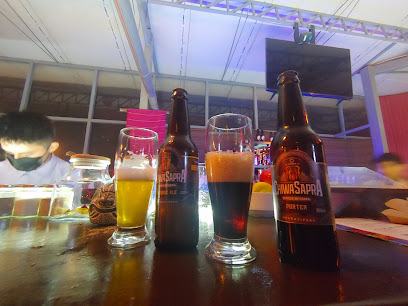
Old West Taberna-Pub
Experience the lively nightlife at Old West Taberna-Pub in Huaraz, where rustic charm meets vibrant entertainment and refreshing drinks.

OJAYO RockBar Loungue
Discover the lively nightlife of Huaraz at OJAYO RockBar Lounge, where great drinks and good vibes await you.

Local Phrases about Huaraz Region
-
- HelloÑawi
[nyaw-ee] - GoodbyeAllinllachu
[ah-yin-yah-chu] - YesArí
[ah-ree] - NoManam
[mah-nam] - Please/You're welcomeSumajkama
[soo-mahy-kah-mah] - Thank youSulpayki
[sool-pahy-kee] - Excuse me/SorryPipas
[pee-pahs] - How are you?Imataq kashanki?
[ee-mah-tahk kah-shahn-kee] - Fine. And you?Allin. Ñuqa?
[ah-yin. nyoo-kah] - Do you speak English?Inglisparlanki?
[een-glees-pahr-lahn-kee] - I don't understandMana riqsisunki
[mah-nah reeks-see-soon-kee]
- HelloÑawi
-
- I'd like to see the menu, pleaseMenu rimankichkanki, kay?
[meh-noo ree-mahn-keech-kahn-kee, kahy] - I don't eat meatChirpuska charquismi
[cheer-poo-skah chahr-keez-mee] - Cheers!¡Chischa!
[chees-chah] - I would like to pay, pleaseTikachikkanki, kay?
[tee-kah-cheek-kahn-kee, kahy]
- I'd like to see the menu, pleaseMenu rimankichkanki, kay?
-
- Help!¡Yachay!
[yah-chai] - Go away!¡Away!
[ah-way] - Call the Police!¡Puliqman llamanki!
[poo-leeq-mahn yah-mahn-kee] - Call a doctor!¡Yachay wasi llamanki!
[yah-chai wah-see yah-mahn-kee] - I'm lostQusqayki
[koos-kahy-kee] - I'm illManchayki
[mahn-chahy-kee]
- Help!¡Yachay!
-
- I'd like to buy...Rimaspa...
[ree-mah-spah] - I'm just lookingRikuspa nomás
[ree-koos-pah noh-mahs] - How much is it?Imataq kay?
[ee-mah-tahk kahy] - That's too expensiveKayta qhali
[kahy-tah khah-lee] - Can you lower the price?Kayta qhipa chayanki?
[kahy-tah khee-pah chah-yahn-kee]
- I'd like to buy...Rimaspa...
-
- What time is it?Imataq p'unchaw?
[ee-mah-tahk poon-chow] - It's one o'clockJunk'aymanta
[hoon-kahy-mahn-tah] - Half past (10)Iskay p'unchawmanta
[ees-kai poon-chow-mahn-tah] - MorningP'unchaw
[poon-chow] - AfternoonTarpuy
[tahr-poo-ee] - EveningInti
[een-tee] - YesterdayQayna
[kahy-nah] - TodayK'ay
[kahy] - TomorrowMaypi
[mahy-pee] - 1Huk
[hook] - 2Iskay
[ees-kai] - 3Kimsa
[keem-sah] - 4Tawa
[tah-wah] - 5Pichqa
[peech-kah] - 6Suqta
[sook-tah] - 7Qanchis
[kahn-chees] - 8Pusaq
[poo-sahk] - 9Isqun
[ees-koon] - 10Chunka
[choon-kah]
- What time is it?Imataq p'unchaw?
-
- Where's a/the...?¿Imataq...?
[ee-mah-tahk] - What's the address?¿Imataq wasipi?
[ee-mah-tahk wah-see-pee] - Can you show me (on the map)?¿Kay pachata munayki?
[kahy pah-chah-tah moo-nahy-kee] - When's the next (bus)?¿Imataq wakachina?
[ee-mah-tahk wah-kah-chee-nah] - A ticket (to ....)Tikiti (manamanta ...)
[tee-kee-tee mah-nah-mahn-tah]
- Where's a/the...?¿Imataq...?
History of Huaraz Region
-
The Huaraz Region was once home to the Recuay culture, which flourished between 200 BCE and 600 CE. Known for their advanced stonework and ceramics, the Recuay people constructed impressive stone buildings and left behind intricate pottery depicting warriors, animals, and deities. Their legacy is evident in archaeological sites such as Pashash and Willkawayin.
-
By the 15th century, the powerful Inca Empire expanded into the Huaraz Region, incorporating it into their vast territory. The Incas established administrative and religious centers, like the temple complex at Chavín de Huantar, which became an important pilgrimage site. The region's strategic location along the Inca road system facilitated trade and communication across the empire.
-
The Spanish conquest of the 16th century brought significant changes to the Huaraz Region. The Spanish established the city of Huaraz in 1574, which became a crucial colonial outpost. The region's indigenous population faced forced labor under the encomienda system, and many local traditions were suppressed or transformed under Spanish rule. Colonial architecture, including churches and administrative buildings, can still be seen in the city today.
-
On May 31, 1970, the Huaraz Region experienced a devastating earthquake with a magnitude of 7.9. The disaster triggered massive landslides and avalanches, particularly in the town of Yungay, which was buried under debris. The earthquake resulted in significant loss of life and property, with over 70,000 people killed and many more displaced. The event led to major reconstruction efforts and remains a pivotal moment in the region's history.
-
In 1975, Huascarán National Park was established to protect the region's unique biodiversity and cultural heritage. The park, named after the towering Huascarán mountain, encompasses a range of ecosystems from tropical forests to glacial peaks. In 1985, it was designated a UNESCO World Heritage Site, recognizing its global significance. The park attracts tourists and researchers alike, drawn by its stunning landscapes and rich cultural history.
-
In recent decades, there has been a resurgence of interest in the traditional cultures of the Huaraz Region. Efforts to preserve indigenous languages, music, and festivals have gained momentum. Events such as the Señor de la Soledad Festival in Huaraz celebrate local religious and cultural traditions, blending indigenous and Spanish influences. Artisans and craftspeople continue to produce textiles, pottery, and other traditional goods, keeping the region's heritage alive.
Huaraz Region Essentials
-
The Huaraz Region is located in the Ancash Department of Peru. The nearest major airport is Jorge Chávez International Airport in Lima, from which you can take a bus or a private car to Huaraz. The journey by road typically takes around 7 to 8 hours. Several bus companies, such as Cruz del Sur and Movil Tours, operate daily services between Lima and Huaraz. Alternatively, you can hire a private taxi for a more comfortable and flexible trip.
-
Huaraz is a relatively small city, and many attractions are accessible on foot. For longer trips within the region, local buses and colectivos (shared minibuses) are the most common forms of transportation. Taxis are also widely available and affordable. For exploring remote areas, renting a car or booking a guided tour might be the best option.
-
The official currency in Peru is the Peruvian Sol (PEN). Credit cards are accepted in most hotels, restaurants, and larger shops in Huaraz, but it is advisable to carry cash for smaller establishments and markets. ATMs are available in Huaraz, but it is wise to have sufficient cash before heading to remote areas.
-
Huaraz is generally a safe destination for tourists, but it is important to take standard precautions. Avoid isolated areas at night and be cautious with your belongings in crowded places. Some neighborhoods may have higher crime rates, so it is best to ask locals or your accommodation for advice on areas to avoid. Always use reputable taxi services and avoid flagging down taxis on the street.
-
In case of emergency, dial 105 for the police and 116 for medical emergencies. Huaraz has several medical facilities, including the Hospital Victor Ramos Guardia. It is recommended to have travel insurance that covers medical emergencies and to carry a basic first aid kit. For minor health issues, pharmacies are readily available throughout the city.
-
Fashion: Do dress in layers, as temperatures can vary greatly throughout the day. Avoid wearing overly casual or revealing clothing, especially in religious sites. Religion: Do respect local customs and traditions. When visiting churches, dress modestly and remain quiet. Public Transport: Do be patient and polite when using public transport. Don’t eat or drink on buses and colectivos. Greetings: Do greet people with a handshake or a friendly 'Buenos días' (Good morning). Eating & Drinking: Do try local dishes like ceviche and pachamanca. Don’t refuse food or drink offerings, as it is considered impolite.
-
To experience Huaraz like a local, visit the local markets such as Mercado Central to buy fresh produce and traditional goods. Engage with locals, who are often friendly and eager to share information about their culture and history. Don’t miss the opportunity to hike the stunning trails of the Cordillera Blanca or visit the ancient ruins of Chavín de Huántar. For a unique experience, participate in a traditional Andean festival if your visit coincides with one.
Nearby Cities to Huaraz Region
-
Things To Do in Trujillo
-
Things To Do in Lima
-
Things To Do in Huancayo
-
Things To Do in Chiclayo
-
Things To Do in Ayacucho
-
Things To Do in Ica
-
Things To Do in Piura
-
Things To Do in Loja
-
Things To Do in Machu Picchu
-
Things To Do in Cusco
-
Things To Do in Cuenca
-
Things To Do in Iquitos
-
Things To Do in Macas
-
Things To Do in Guayaquil
-
Things To Do in Salinas



